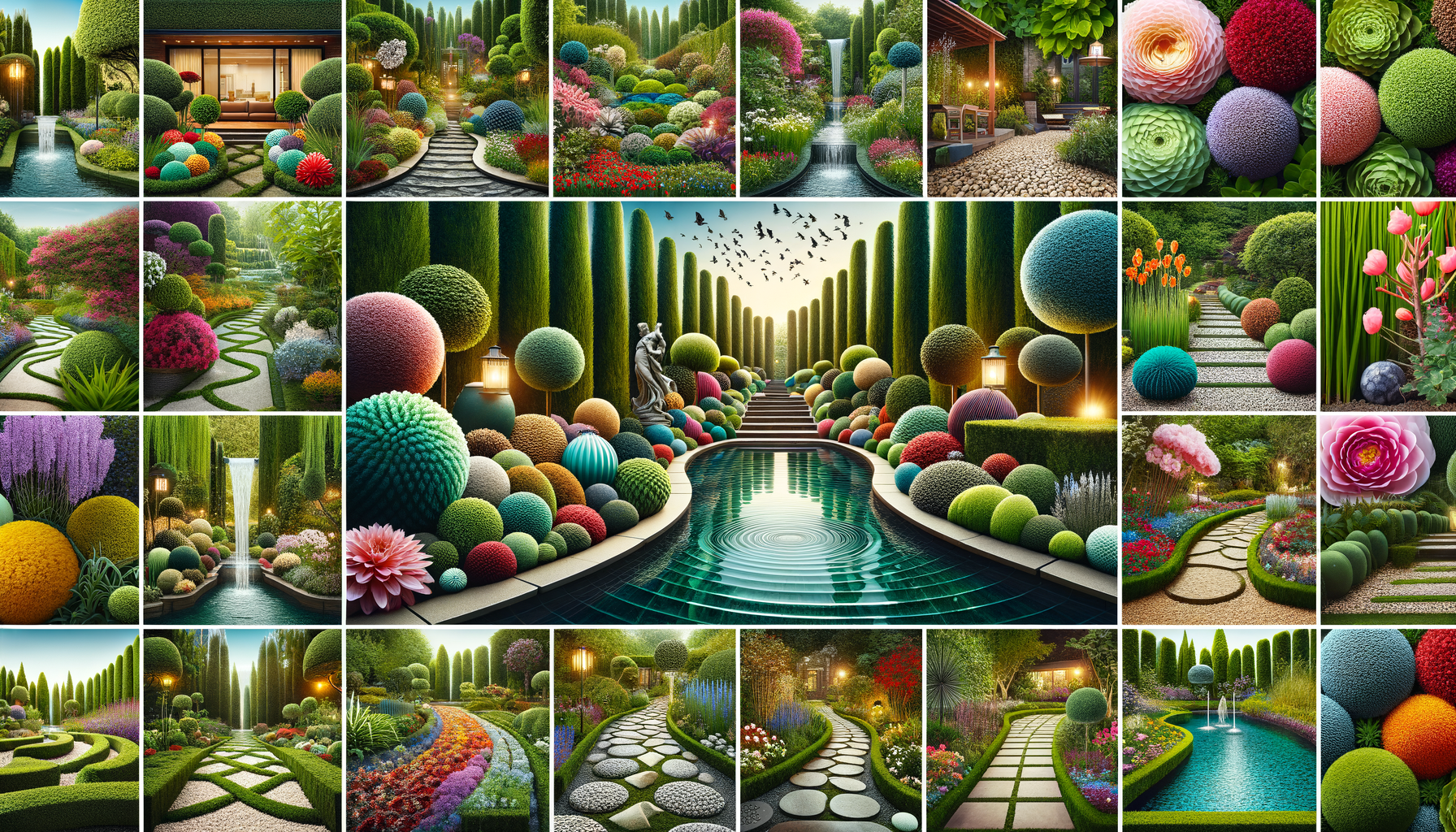
Innovative Landscaping Concepts for a Tranquil Garden
Understanding the Basics of Landscape Design
Before diving into unique landscaping ideas, it’s essential to understand the foundational principles of landscape design. This involves balancing aesthetics with functionality to create a harmonious outdoor space. Key elements include line, form, texture, color, and scale. These components work together to guide the eye and create a sense of cohesion. For instance, using curved lines can create a more natural and relaxed feel, while straight lines often convey formality and structure.
Incorporating different forms, such as round bushes or angular pathways, adds visual interest. Texture, achieved through varied plant types and materials like stone or wood, can enhance the sensory experience. Color plays a pivotal role, with vibrant flowers drawing attention and greenery providing a calming backdrop. Lastly, scale ensures that all elements are in proportion, preventing any component from overwhelming the space.
Understanding these basics allows for creativity within a structured framework, ensuring that your garden not only looks appealing but also serves its intended purpose effectively.
Incorporating Water Features for Serenity
Water features are a wonderful addition to any garden, offering both visual appeal and a soothing auditory experience. The gentle sound of flowing water can mask urban noise, providing a tranquil retreat. Options range from elaborate fountains to simple birdbaths, each adding a unique charm.
Ponds are a popular choice, especially when stocked with fish or adorned with aquatic plants. They create a mini-ecosystem, attracting wildlife and promoting biodiversity. For smaller spaces, a wall-mounted water feature or a tabletop fountain can be just as effective. These options are low-maintenance and can fit seamlessly into various garden styles.
Consider the placement carefully to maximize the impact. A water feature near a seating area enhances relaxation, while one at the garden’s entrance can create a welcoming ambiance. The key is to ensure that the feature complements the overall design without overpowering it.
Utilizing Vertical Gardening Techniques
Vertical gardening is an innovative solution for maximizing space, especially in urban environments where ground area is limited. By growing plants upwards, you can create lush, green walls that add depth and interest to your garden.
There are numerous methods to achieve vertical gardening, from using trellises and arbors to installing pocket planters or hanging baskets. These structures support climbing plants like vines or creepers, which can transform a plain wall into a vibrant tapestry of foliage and flowers.
Vertical gardens are not only visually striking but also functional. They can act as natural insulators, reducing energy costs by keeping buildings cooler in summer and warmer in winter. Additionally, they improve air quality by filtering pollutants and increasing oxygen levels.
When planning a vertical garden, consider the light and water requirements of your chosen plants, ensuring they are suitable for the intended location. With the right care, a vertical garden can become a stunning focal point in any landscape.
Creating Themed Garden Areas
Themed gardens offer a unique way to express creativity and personalize your outdoor space. By focusing on a specific style or concept, you can create distinct areas within your garden that evoke different moods or experiences.
A Japanese Zen garden, for instance, emphasizes simplicity and tranquility, using elements like rocks, sand, and minimalistic plantings to create a meditative atmosphere. In contrast, a cottage garden is characterized by a riot of colorful flowers and a more informal layout, evoking a sense of nostalgia and charm.
Other themes might include a tropical paradise with lush, exotic plants, or a desert landscape featuring succulents and cacti. When designing a themed garden, consider the climate and soil conditions, ensuring that your plant choices are well-suited to the environment.
Themed areas can be linked by pathways or separated by hedges or fences, allowing for a seamless transition between different sections. This approach not only enhances the visual appeal but also provides varied experiences as you move through the garden.
Integrating Edible Landscaping
Edible landscaping combines beauty with utility, allowing you to cultivate a garden that is both attractive and productive. By incorporating fruit-bearing trees, vegetable patches, and herb gardens into your landscape design, you can enjoy fresh produce while maintaining an aesthetically pleasing environment.
Start by selecting plants that thrive in your local climate and soil conditions. Fruit trees like apple or cherry can serve as focal points, while berry bushes and grapevines can be used as natural borders or climbing features. Herbs such as rosemary, thyme, and basil not only add flavor to your dishes but also provide fragrant foliage and flowers.
Consider companion planting, which involves growing certain plants together for mutual benefit, such as pest control or improved growth. For example, marigolds can deter pests from vegetable gardens, while basil enhances the flavor of tomatoes.
Edible landscaping promotes sustainability by reducing the need for store-bought produce and encouraging organic gardening practices. It also fosters a deeper connection with nature, as you witness the growth cycle from seed to harvest.
With thoughtful planning, your garden can become a source of nourishment for both the body and the soul.

